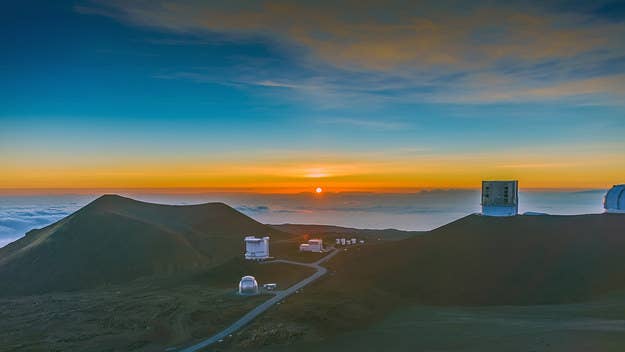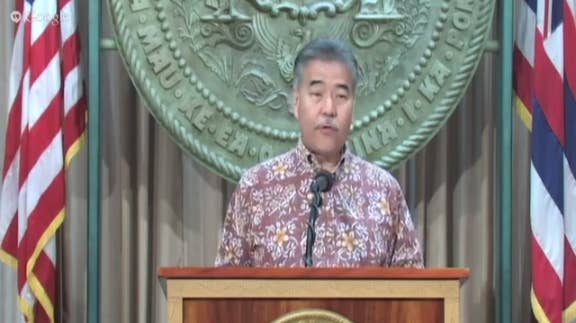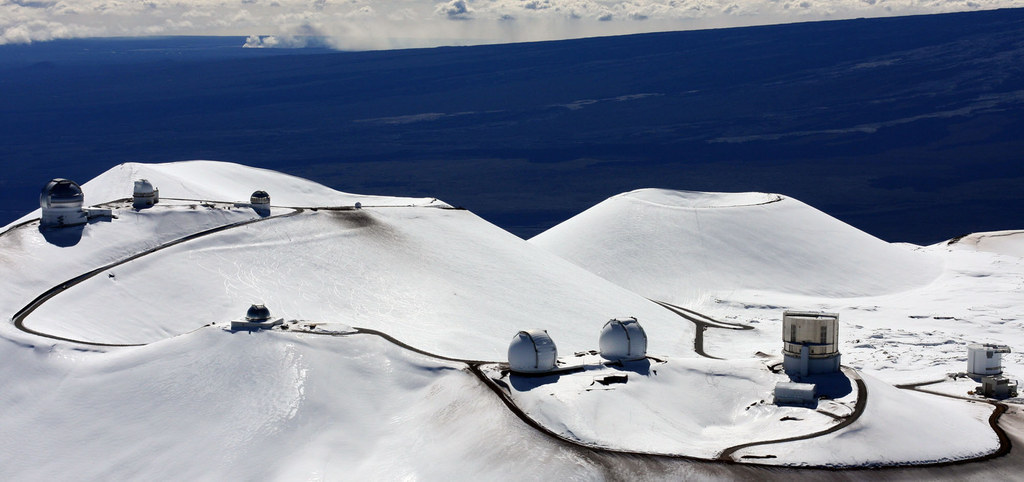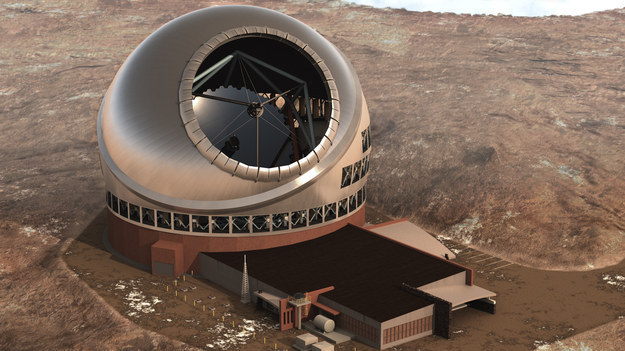
Construction in Hawaii on what will be one of the world's largest telescopes is set to resume Wednesday on land some natives consider sacred, the nonprofit behind the project announced.
In a statement issued over the weekend, the chairman of the TMT International Observatory Board, Henry Yang, said that after more than two months of consulting with stakeholders, the nonprofit felt comfortable moving forward with the controversial $1.4 -billion project.
"Our period of inactivity has made us a better organization in the long run," Yang said. "We are now comfortable that we can be better stewards and better neighbors during our temporary and limited use of this precious land, which will allow us to explore the heavens and broaden the boundaries of science in the interest of humanity."
Work on the giant telescope on the summit of the Big Island's Mauna Kea was halted earlier this year amid protests that led to several arrests of demonstrators who blocked roadway access.
Kealoha Pisciotta, one of the protesters and plaintiffs challenging the telescope's construction permit, told the Associated Press on Sunday that she was shocked by Yang's announcement.
"I'm sorry to say that Mr. Moore and the Thirty Meter Telescope board are demonstrating their lack of willingness to follow the law," she said.
Pisciotta noted that Yang's announcement came one day after the Hawaii Supreme Court scheduled oral arguments in the permit challenge for Aug. 27.
She told the AP protests over the project would resume.

The Thirty Meter Telescope got a boost in April when Hawaii Gov. David Ige announced that construction of the giant telescope had a right to proceed during the court challenge and that the state would support it.
But he also said protesters had a right to demonstrate.
In his statement over the weekend, Yang also acknowledged the rights of protesters to assemble peacefully, but said he hoped they would not block access to the site.
"We look forward to a positive relationship with all Hawaiians, while we understand that the majority of Hawaii's people are supporting the TMT project," he said. "We deeply respect and are mindful of those who have concerns, and yet, we hope they will permit us to proceed with this important task while reserving their right to peaceful protest."
Yang added that TMT is "open and willing" to allow cultural practitioners in the area of the construction site to continue customary and traditional practices. Allowing the practice to continue, however, will require further dialogue to establish "a cooperative and harmonious environment for all parties."
Parts of the telescope have continued to be constructed elsewhere during the work stop, including in India, China, and California.

Despite Ige's public support of the project in April, he called for better stewardship of the Mauna Kea summit, saying "we have failed the mountain."
Ige called on University of Hawaii to make a commitment that there will be no more construction beyond the area where the Thirty Meter Telescope is planned for and called for at least one-fourth of the existing telescopes to be decommissioned by the time TMT is completed. He also wants the university to return all lands not needed for astronomy to the Department of Land and Natural Resources, which he said included more than 10,000 acres.
The governor also called on the university to revisit prior lease terms for the existing telescopes, and to explore whether greater payments were due.
Ige also announced plans to create a Mauna Kea Cultural Council that he said would add significant value in providing a cultural aspect to the management of the mountain. Supporting TMT would not be required for those who serve on the council, he said, adding that they would work with the Department of Land and Natural Resources and the governor's office to make sure the host culture is respected in the future.

Yang, at the time said his organization was grateful for Ige's leadership and statement of support, and pledged to "work with the framework he has put forth."
"We know we have a lot of work ahead of us," he said in a statement. "We appreciate that there are still people who are opposed to the project, and we will continue to respectfully listen and work with them to seek solutions. We also want to acknowledge and thank our many supporters on the Big Island and beyond."

Many Hawaiians consider the summit their birthplace, where earth mother Papahanaumoku and the sky father Wakea created the islands. It is also home to a fragile ecosystem, where the threatened wekiu bug has been impacted by development.
The protests spread from the Big Island to neighboring islands, as well as across the Pacific Ocean. Protesters have rallied in front of the Thirty Meter Telescope headquarters located in Pasadena, California, on multiple occasions.
In Honolulu, protesters marched from the Office of Hawaiian Affairs to the State Capitol on April 21, arriving at Ige's office to deliver a petition signed by more than 53,000 people.
The arrests in early April only seemed to give more energy to the anti-telescope movement, which has continued via demonstrations even during the work shutdown. Protesters meet on a daily basis at the summit of Mauna Kea and celebrities, including Jason Momoa, who is Native Hawaiian, have used social media to garner attention for their message.
Telescopes have been built on the summit of Mauna Kea since the late 1960s, where there are now more than a dozen telescopes. But a growing Hawaiian rights movement and mismanagement of the land has fueled the recent protest movement.
At the end of April, the Office of Hawaiian Affairs — a state agency intended to advocate for Native Hawaiian issues — voted to rescind its official support, leaving the organization's stance neutral.
However, there has been some support for the telescope. An 18-year-old Hawaiian student, Mailani Neal, on the Big Island started a petition called "We Support TMT," which currently has more than 7,000 signatures.

